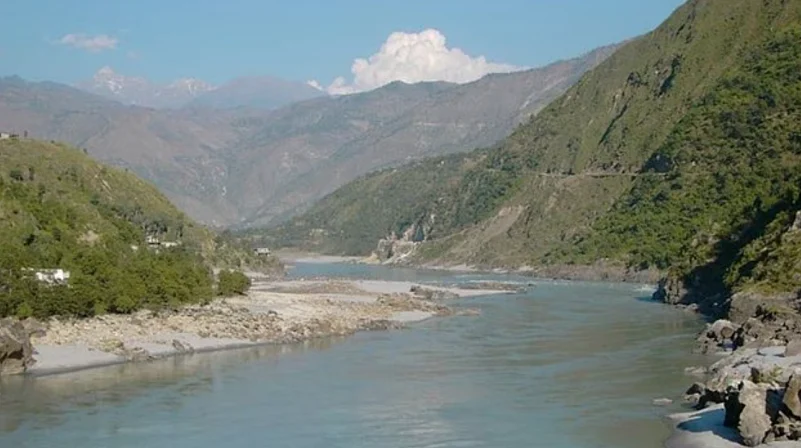India issued a formal notice to Pakistan on August 30, seeking a review of the 1960 Indus Water Treaty. The notice highlights that the treaty has been imbalanced since its inception, and certain provisions require reassessment. India also referenced ongoing terrorist activities originating from Pakistan, stating that Pakistan has been exploiting India's goodwill. As per Article 12 (3) of the treaty, its provisions can be modified through a mutually ratified agreement between the two governments.
In January 2023, India issued a similar notice seeking modifications to the 1960 Indus Waters Treaty (IWT) after Pakistan attempted to unilaterally alter the dispute resolution process between the two countries. As per sources, the notice highlights significant and unforeseen changes in circumstances that necessitate a reassessment of the treaty's obligations under various articles. Three main concerns were raised to support the argument that the 1960 agreement is no longer viable.
The first concern is the considerable shift in population demographics, alongside the growing agricultural and other water usage needs. The second is the urgency to accelerate clean energy development to help India meet its emission targets. The third focuses on the ongoing cross-border terrorism in Jammu and Kashmir, which has disrupted the smooth functioning of the treaty and hindered India's full exercise of its water rights.
These issues have surfaced amidst prolonged disagreements over the Ratle and Kishenganga hydropower projects. Indian officials believe that Pakistan has consistently obstructed every project on the Indian side, taking undue advantage of India's goodwill under the Indus Waters Treaty.
What Is The Indus Water Treaty?
The Indus Water Treaty (IWT) is a water-sharing agreement between India and Pakistan, brokered by the World Bank in 1960. It was designed to resolve disputes over the use of the waters of the Indus River system, which flows through both countries. Given the geopolitical tensions between India and Pakistan, the treaty has stood as a rare example of successful diplomacy and cooperation, surviving multiple wars and political crises. Here's a detailed overview of the treaty.
History
The partition of British India in 1947 left the water resources of the Indus River system divided between India and Pakistan. This division led to significant disputes over water rights, as the headworks of major canals controlling Pakistan’s irrigation systems were in India. Tensions over water escalated into diplomatic standoffs, necessitating a formal mechanism to manage water sharing between the two nations.
The River System
The Indus River system consists of six major rivers - Indus, Jhelum, Chenab, Ravi, Beas, and Sutlej. These rivers flow from the Himalayas through India and Pakistan, with some originating in Tibet and Kashmir. The rivers are vital for agriculture, drinking water, and hydropower generation for both countries, making their management critical.
Key Provisions Of The Treaty
The treaty allocates the waters of the rivers based on a division of the river system:
Eastern Rivers (Ravi, Beas, Sutlej): The treaty allocates unrestricted use of these rivers to India. India can use the waters for irrigation, hydropower, and other purposes.
Western Rivers (Indus, Jhelum, Chenab): These rivers are allocated primarily to Pakistan. While Pakistan receives most of the water, India has limited rights for agriculture, hydropower generation, and domestic use, provided it does not alter the flow significantly.
This division allowed both nations to develop their respective river systems for agriculture and industry, while also ensuring that Pakistan received the majority of the Indus Basin’s waters, which are essential for its economy.
Dispute Resolution Mechanism
A key feature of the Indus Water Treaty is the robust dispute resolution mechanism. This includes:
Permanent Indus Commission: A bilateral body that ensures the implementation of the treaty and addresses concerns that arise between the countries. Each country appoints a commissioner.
Three-Tiered Resolution Process: If disagreements arise, they can be referred to the Indus Commission. If unresolved, the matter can escalate to a neutral expert or be brought before the World Bank, which acts as a guarantor of the treaty.
The treaty has provisions to resolve technical disputes, such as the construction of new dams or projects that may impact water flow, ensuring that both countries’ interests are protected.
Significance f the Treaty
Water Security: The Indus River system is the lifeline of Pakistan’s agriculture, with over 80% of the country’s food production depending on irrigation from these rivers. For India, the eastern rivers are crucial for its northern states, particularly Punjab, Haryana, and Himachal Pradesh.
Diplomatic Achievement: The treaty is considered one of the most successful international agreements and has been hailed as a rare instance of peaceful cooperation between two historically antagonistic neighbors.
Survival Amidst Conflict: The Indus Water Treaty has withstood the test of time, enduring three wars between India and Pakistan (1965, 1971, and 1999). Both nations have, for the most part, honored the terms of the agreement, underscoring its importance in ensuring regional stability.
Challenges And Controversies
In recent years, several challenges have emerged regarding the treaty:
Infrastructure Projects: India’s development of hydroelectric projects on the western rivers (like the Kishanganga and Ratle projects) has raised concerns in Pakistan, which fears these projects could reduce water flow. Disputes over such projects have led to arbitration cases.
Climate Change: Changing weather patterns due to climate change are causing variations in river flows. With increasing water demand and unpredictable monsoons, both countries face challenges in managing water resources effectively.
Political Strains: The ongoing conflict in Kashmir, where several of these rivers flow, has put pressure on the treaty. At times, Indian officials have suggested reviewing or even suspending the treaty as part of political retaliations, although no formal action has been taken on this front.
The Indus Water Treaty is a cornerstone of India-Pakistan relations, crucial to the livelihoods of millions of people in both countries. While it has been remarkably resilient, the challenges of infrastructure development, climate change, and regional politics could test the treaty’s durability in the future. However, the treaty’s core principle of cooperation and mutual benefit remains a vital lesson in international diplomacy. As both countries navigate new challenges, the Indus Water Treaty continues to serve as a reminder of the possibility of peaceful solutions even in the most contentious geopolitical contexts.


























